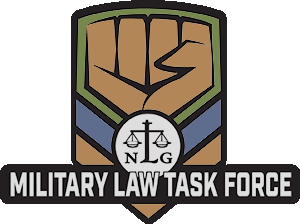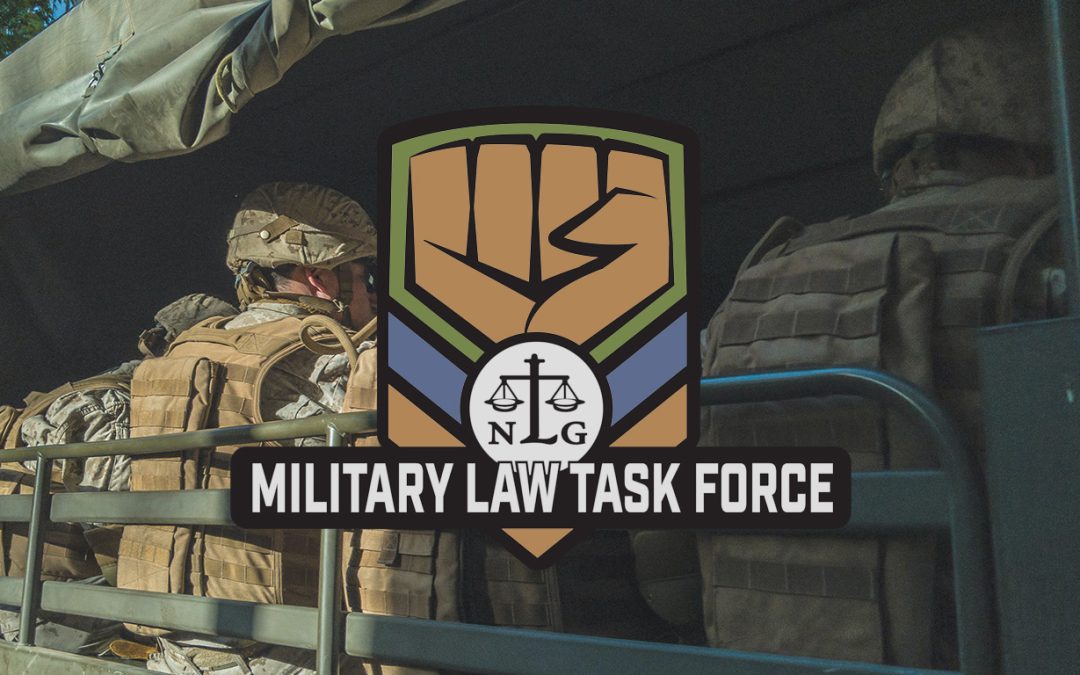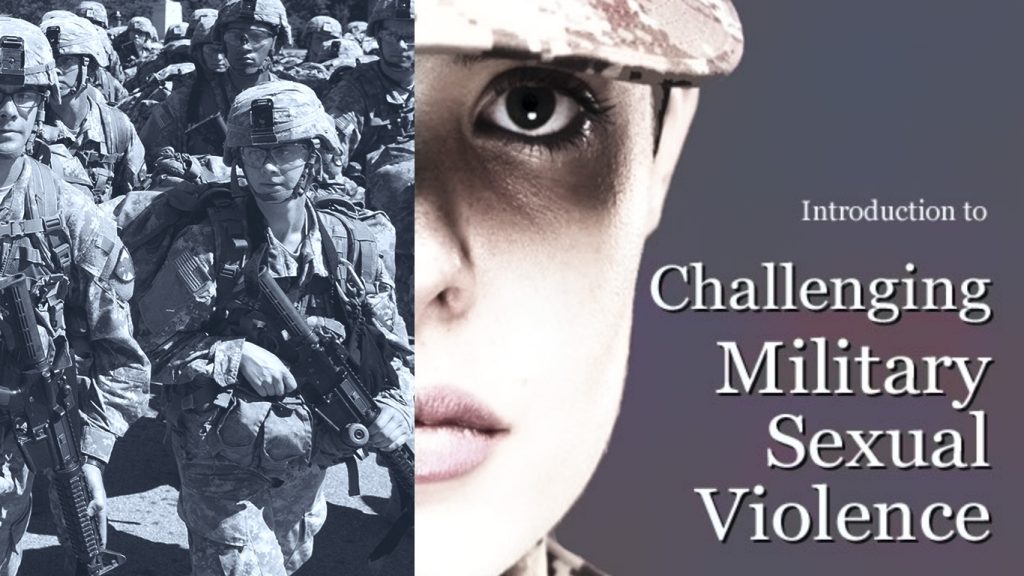BY EDWARD HASBROUCK
As sabre-rattling and escalation of US military conflict prompted fears that all-out war with Iran might lead to activation of the Selective Service System’s contingency plans for a military draft1, the stage is being set for the most serious consideration by Congress since 1980 of the future of the Selective Service System (SSS), draft registration, and military conscription.2
The 5th Circuit Court of Appeals has scheduled3 oral argument on March 4, 2020, at Tulane University Law School in New Orleans on the government’s appeal of the U.S. District Court declaratory judgment in National Coalition for Men v. SSS that the current male-only draft registration requirement is unconstitutional. If upheld, as seems likely, this ruling will force Congress either to accept a court-ordered end to draft registration for men, try to expand draft registration to women as well as men, or replace the current registration scheme with some alternate contingency plan for conscription applicable equally to women and men.4
The National Commission on Military, National, and Public Service 5 (NCMNPS), which was created in response to this judicial pressure for Congressional action, has concluded its public comment period6, public hearings7, and closed-door meetings with invited stakeholders (including, near the end of this two-year process, a conference call with war resisters and conscientious objectors8), and is scheduled9 to release its final report and legislative recommendations on its Web site10 on March 25, 2020, and at an event in Washington, DC, the next day.
Meanwhile, on December 19, 2019 – pre-empting the Congressional agenda on Selective Service ahead of the NCMNPS report – U.S. Representatives Peter DeFazio (D-OR) and Rodney Davis (R-IL) introduced H.R. 5492, a bill “To repeal the Military Selective Service Act, and thereby terminate the registration requirements of such Act and eliminate… the Selective Service System.”11
H.R. 5492, drafted in close consultation with anti-draft activists including members of the NLG Military Law Task Force, is the most comprehensive anti-draft proposal introduced in Congress since the reinstatement of Selective Service registration in 1980. H.R. 5492 would:
- Repeal the Military Selective Service Act (thereby eliminating Presidential authority to order men to register with the SSS for a possible military draft and eliminating criminal penalties for failure or refusal to register);
- Abolish the SSS (thereby ending contingency planning by the SSS for the Health Care Personnel Delivery System12 or any other form of special-skills draft);
- Prohibit all other Federal agencies from imposing civil sanctions (denial of Federal student financial aid, Federally-funded jobs, etc.) for nonregistration or using nonregistration as a basis for other adverse determinations (denial of naturalization as a U.S. citizen, etc.);
- “Preempt” (and thereby override and prohibit) all state sanctions for nonregistration (denial of drivers’ licenses, state financial aid, state jobs, etc.); and
- Preserve the rights of conscientious objectors under other laws and regulations (such as applicants for reassignment to noncombatant duties or discharge from the military on the basis of conscientious objection).
Getting H.R. 5492 introduced in Congress is a key step toward finally ending draft registration after forty years of failure. H.R. 5492 is based in part on a bill introduced in 2016, also co-sponsored by Rep. DeFazio. H.R. 5492 is significantly more comprehensive than any of its predecessors, however, and includes everything that anti-draft and anti-war organizations and activists and Rep. DeFazio have asked the NCMNPS to include in its recommendations to Congress.13
There have been other proposals over the decades to eliminate some of the Federal penalties for nonregistration and/or to abolish the Selective Service System. But H.R. 5492 is the first bill that would also do away with the lifetime sanctions for nonregistration imposed by dozens of state laws.
The safest course for most young men who don’t want to be drafted but also don’t want to risk sanctions is to register shortly before their 26th birthdays, minimizing their time of exposure to the draft but also avoiding any penalties later in life. But tens of millions of men who didn’t register by age 26 remain subject to a lifetime of adverse collateral consequences, some of which vary by state.
As I pointed out to the NCMNPS, “Every U.S. war in which conscription has been used has been followed by public debate and agitation – sometimes prolonged and often acrimonious – about how to deal with those who resisted or violated the draft law while it was in effect. After each such war – the Civil War, World War I, World War II, and the U.S. war in Indochina – there has eventually been some sort of formal or informal pardon, amnesty, commutation of sentence, early release from prison, or other official action to mitigate some of the penalties imposed on draft and war resisters during the war and while the draft was in use. Some of the most heated debate over how to respond to resistance by the ‘Vietnam generation’ concerned how to treat resisters after the U.S. withdrew from Vietnam and the draft was ended. Military and draft resisters and exiles continued to be subject not only to the risk of criminal prosecution but to administrative and immigration sanctions. Two incomplete ‘amnesties’ left penalties in effect for some resisters, and a legacy of bitterness. The Commission should foresee, and you should point out to Congress and the President, that another – and probably much more prolonged – such controversy can be anticipated if the Selective Service registration requirement is ended without ending and explicitly foreclosing all state and Federal sanctions for past nonregistration…. Extended, complex, and costly Federal litigation would of course be inevitable…. Litigation over state sanctions for past nonregistration would likely be even more prolonged and burdensome…, and even less likely to produce consistent outcomes or meaningful closure.”14
It remains unclear what the NCMNPS will recommend. During the hearing at which I testified, Brig. Genl. Joe Heck, Chair of the NCMNPS, asked me what I would do if “we’re in a Red Dawn scenario, we’re being attacked through both Canada and Mexico,” and there aren’t enough volunteers to defend the U.S.15 Pentagon officials and other witnesses at the hearings were unable to come up with any plausible scenario for when a draft might be needed. But they argued for continuing draft registration and contingency planning for activation of a draft, as an “insurance policy” (i.e. to facilitate and make it easier to reinstate a draft), as a “lead generation” tool for military recruiters, as a symbol of the duty of the individual to serve the state, and as a tool to “channel” young people into roles and tasks – civilian and/or military – that the government decides will best serve its interests.16
As the Veterans for Peace said in a resolution calling for the repeal of the Military Selective Service Act adopted by a vote of its membership in 2012, draft registration “aids the government in its instrumentation of war”. 17
Those who supported expanding draft registration to women told the NCMNPS that doing so would more fully integrate women into the military and the system of war-making. But as the feminist antiwar organization CODEPINK said in a statement submitted to the NCMNPS, “Women’s equality will not be achieved by including women in a draft system. It is irresponsible for the fight for women’s rights to seek equal moral injury, equal PTSD, equal brain injury, equal suicide rates, equal lost limbs, or equal violent tendencies that military veterans suffer from. When it comes to the military, women’s equality is better served by ending draft registration for everyone.”18
NCMNPS records19 released in response to my FOIA requests (many of which remain unanswered20) suggest that the NCMNPS initially focused on the possibility of compulsory national service21. But more recent statements by members of the NCMNPS imply that the Commissioners have been persuaded that any expanded compulsory service scheme would be too strongly opposed, and perhaps also too expensive, to be politically viable.
My guess, based on the questions asked during the NCMNPS hearings and the most recent records released by the NCMNPS, is that the NCMNPS may recommend ending the current draft registration program, but keeping the SSS to provide updated contingency plans for an “on demand” conscription system not based on prior registration, and some (voluntary but “incentivized”) new secondary inactive reserve scheme.22
This would likely mean eliminating the current criminal penalties for nonregistration, at least during times when inductions aren’t being ordered, but would likely leave in place both Federal and state administrative sanctions for past nonregistration. This is why it’s so important for H.R. 5492 to have been introduced and to be considered by Congress as a better alternative to whatever the NCMNPS recommends, even if the NCMNPS recommendations include an end to draft registration.
Any new contingency plans for conscription recommended by the NCMNPS are likely to include women as well as men. Despite partisan differences, a majority of the Commissioners probably believe – perhaps correctly – that women won’t object too much to being included in contingency planning for a draft, as long as they aren’t now registered or required to do anything.
Sometime after it receives the NCMNPS report and recommendations in March 2020, Congress will take up the issue of whether to end draft registration or try to extend it to young women as well as young men. I expect that debate will wait until after the elections, in late 2020 or perhaps more likely 2021. But Congress can’t dodge the issue much longer than that without being overtaken by the courts.
H.R. 5492 could be considered on its own, or incorporated into a larger bill such as one implementing recommendations of the NCMNPS (which would probably also contain additional funding for voluntary national service programs along with proposals related to the SSS) or the annual omnibus National Defense Authorization Act (which was the bill used to create the NCMNPS in 2016).
Opponents of military conscription can take action now and over the next 12-18 months to help end draft registration, preparations for a military draft, and Federal and State punishment of draft registration resisters.
Ask U.S. Representatives to co-sponsor H.R. 5492. Ask Senators to introduce a similar bill in the Senate.23 If you are part of an organization that opposes military conscription, ask your group to endorse H.R. 5492, and encourage your members to contact their Representatives and Senators.
Ask candidates to take a stand on this issue: “If elected, would you support legislation to try to expand draft registration to women, or would you support legislation such as H.R. 5492 to end draft registration and abolish the Selective Service System?” For what it’s worth, the first non-incumbent Congressional candidate to explicitly endorse H.R. 5492 is Shahid Buttar, a civil liberties lawyer and the leading challenger to House Speaker Nancy Pelosi in San Francisco.24 Speaker Pelosi supported expanding draft registration to women in 2016, but has not yet announced her position on H.R. 5492.
Congress will soon be holding its first serious debate on Selective Service in decades, and the issue of the draft will get more public attention than it has in decades. Use this window of opportunity, especially during the upcoming 2020-2021 school year, to encourage and participate in seminars, teach-ins, debates, and discussions about the draft and draft registration on campuses (including peace studies and women’s and gender studies classes, departments, and centers) and among student, youth, community, anti-war, civil liberties, and legal organizations and activists. It’s important for the debate in Congress to be driven by public sentiment – which is predominantly antiwar and anti-draft, especially among women and young people – rather than limited to the issues as defined by the Pentagon, which focus on how to staff the military rather than on whether we should be fighting the current wars at all, or on their present scale, or enabling their expansion through any form of draft.
Edward Hasbrouck is a legal worker in San Francisco with the Identity Project (PapersPlease.org). He has been a member of the NLG and the MLTF since the early 1980s, when he was an organizer with the National Resistance Committee and co-editor of Resistance News. He publishes a website about the draft, draft registration, draft resistance, and the Selective Service System at Resisters.info.
- The SSS.gov Web site almost crashed under a five-fold increase in visitors, casting severe doubt on the readiness of the SSS to handle the inevitably much greater increase in inquiries in the event of an actual draft. Meanwhile, scammers and identity thieves tried to exploit the scare with a wave of fake “induction orders” send by e-mail and cellphone text messaging, as I had predicted in my testimony to the NCMNPS in April 2019. Edward Hasbrouck, “Should we be worried about a possible military draft?”, January 16, 2020, <https://hasbrouck.org/blog/archives/002364.html>
- See “FAQ about the Selective Service System and the military draft (required military service)”, <https://hasbrouck.org/draft/SSS–FAQ.html>, and “Preguntas frecuentes sobre el Sistema de Servicio Selectivo y la conscripción (servicio militar obligatorio)”, <https://hasbrouck.org/draft/SSS–FAQ–ES.html>
- Argument Calendar, <http://www.ca5.uscourts.gov/clerk/calendar/2003/32.tul.htm>
- Edward Hasbrouck, “Federal court declares current military draft registration requirement unconstitutional”, February 24, 2019, <https://hasbrouck.org/blog/archives/002337.html>
- See Edward Hasbrouck, “National Commission on Military, National, and Public Service”, <https://hasbrouck.org/draft/commission.html>
- NLG Military Law Task Force, et al., “Last Call for Public Comments to End Draft Registration!”, November 19, 2019, <https://hasbrouck.org/blog/archives/002361.html>. Statement by the Military Law Task Force of the National Lawyers Guild and Resolution of the National Lawyers Guild opposing Selective Service and the Draft submitted to the NCMNPS, December 13, 2019, <https://inspire2serve.gov/_api/files/384>.
- Edward Hasbrouck, “My testimony to the National Commission on Military Service”, April 25, 2019, <https://hasbrouck.org/blog/archives/002342.html>, and “Former Director of Selective Service says it’s time to end draft registration”, April 28, 2019, <https://hasbrouck.org/blog/archives/002344.html>
- Edward Hasbrouck, “Anti-war activists meet with members of the National Commission on Military Service”, November 19, 2019, <https://hasbrouck.org/blog/archives/002360.html>
- NCMNPS, “From Interim Report to Final Report”, January 23, 2020, <https://medium.com/@inspire2serveUS/from–interim–report–to–final–report–454dab4302fd>
- The official NCMNPS Web site is at <https://inspire2serve.gov>.
- H.R. 5492 – 116th Congress, <https://www.congress.gov/bill/116th–congress/house–bill/5492>. See also Edward Hasbrouck, “Bill introduced to end draft registration”, December 20, 2019, <https://hasbrouck.org/blog/archives/002363.html>.
- See, “Health Care Workers and the Medical Draft”, <https://medicaldraft.info>, and proposed rules for the HCPDS (neither finalized nor withdrawn), 54 Federal Register 33644-33654, August 15, 1989, <https://hasbrouck.org/draft/HCPDS–15AUG1989.pdf>. The HCPDS proposed rules and contingency plans include both women and men ages 20-54 in 57 specified health care occupational categories including, e.g., physical and occupational therapist, medical equipment repair specialists, dieticians, veterinary technicians, etc.
- See letters from Rep. DeFazio to the NCMNPS, April 12, 2109, <https://inspire2serve.gov/_api/files/243>, and December 20, 2019, <https://inspire2serve.gov/_api/files/407>, and statements of Resisters.info to the NCMNPS, November 13, 2019, <https://inspire2serve.gov/_api/files/381>, and December 23, 2019, <https://inspire2serve.gov/_api/files/405>.
- Statement to conference call with members of the NCMNPS, November 13, 2019, <https://inspire2serve.gov/_api/files/381>
- C-SPAN video clip, <https://www.c–span.org/video/?c4804254%2Fexistential–threats>
- For more analysis of the arguments to the NCMNPS in favor of continuing draft registration, see Edward Hasbrouck, “Will there be a new military draft? Why should we care?”, Fifth Estate #405, Winter 2020, <https://www.fifthestate.org/archive/405–winter–2020/will–there–be–a–new–military–draft/>
17 Veterans For Peace, “Ending Selective Service”,
<https://www.veteransforpeace.org/files/8515/5872/5281/2019_May_–_Master_Resolution_List.pdf> 18 CODEPINK, Statement to the NCMNPS, November 2019, <https://www.inspire2serve.gov/_api/files/377>. For more feminist statements against the draft and draft registration, see Resisters.info, “What’s happening with women and Selective Service registration?”, <https://hasbrouck.org/draft/NCMNPS–women.pdf> and additional links in “Women and Draft Registration (Selective Service)”, <https://hasbrouck.org/draft/women.html>.
- “Records released by the NCMNPS is response to FOIA requests”, <https://hasbrouck.org/draft/commissionfoia.html>
- As of the annual FOIA report for FY 2019, all three unanswered backlogged FOIA requests to the NCMNPS were from me. <https://inspire2serve.gov/_api/files/411>.
- See <https://nationalservice.info>.
- For the most recent and detailed outline of proposals with respect to Selective Service still being considered late in the NCMNPS deliberations, see the talking points for a speech by NCMNPS Chair and Brig. Genl. Heck to the Reserve Component Chiefs Quarterly Meeting, Army Navy Country Club, Arlington, VA, September 10, 2019, <https://hasbrouck.org/draft/FOIA/ChairmanHeck–RFPB–TalkingPoints–9–10–2019.pdf>.
- Individually written and sent messages carry more weight, but a Web form to e-mail your Representatives and Senators, based on your zip code, is available at <https://actionnetwork.org/letters/repeal–the–us–militaryselective–service–act/>.
- <https://twitter.com/ShahidForChange/status/1221132112943730688>



